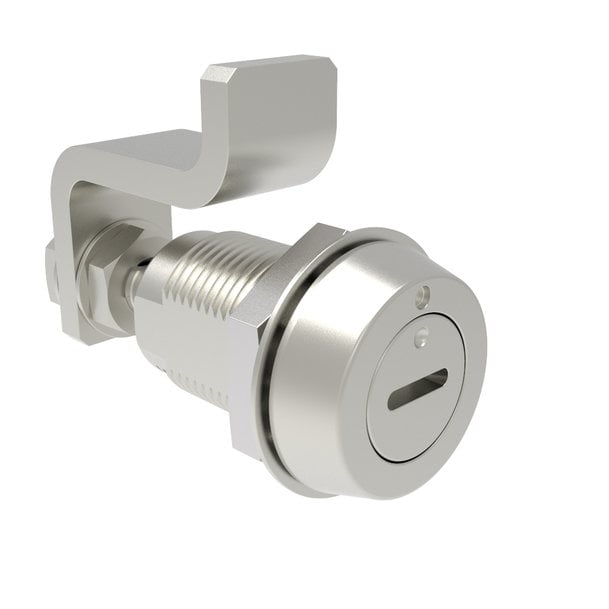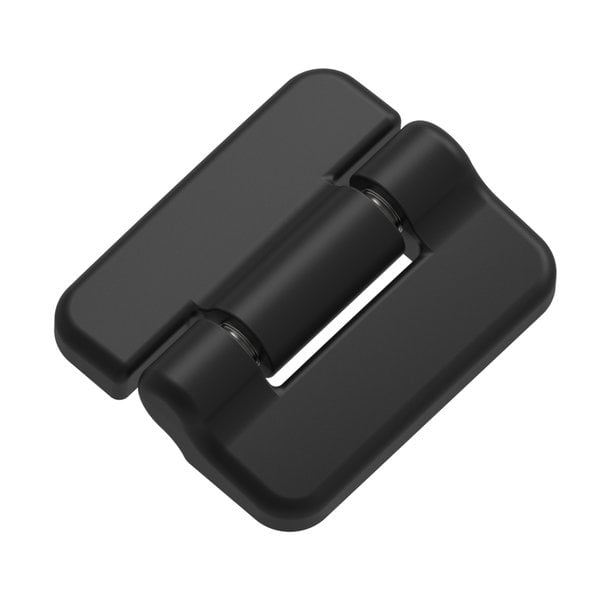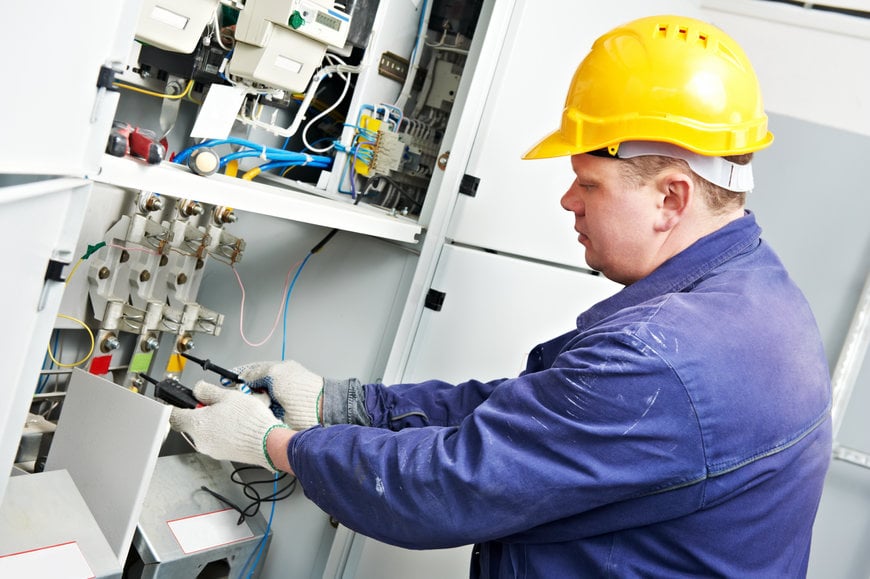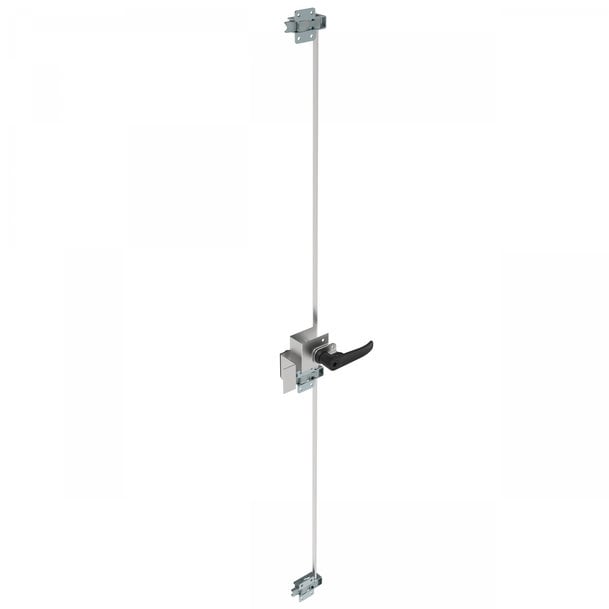www.industryemea.com
07
'22
Written on Modified on
ADDING VALUE TO HEATING, VENTILATION AND AIR CONDITIONING WITH ACCESS HARDWARE
Author: Todd Schwanger, Commercial Product Manager, Southco Inc.

Commercial heating, ventilation and air-conditioning (HVAC) systems are some of the most expensive and critical engineered systems used in buildings today.
Building owners, developers and their tenants seek more cost-effective and energy-efficient equipment that supplies comfortable environmental conditions as seasons change. With construction projects in motion around the world, the market is extremely competitive, with major players striving to add value through reductions in energy consumption and offering innovative solutions to meet customer requirements.
In response, HVAC equipment manufacturers have been improving their enclosure designs to be more energy efficient and ergonomic. One major challenge is that HVAC enclosures now often feature thicker insulated doors to prevent heat from transferring through the door. As a result, there is a need for new latching and hinging technology that can improve access to these enclosures and help HVAC equipment suppliers satisfy their end-use customers.
ENGINEERING HVAC ENERGY EFFICIENCY
The latest HVAC systems incorporate advanced digital controls and sophisticated air-handling and heat transfer technology. While much more efficient, this still makes HVAC systems significant energy consumers. According to the U.S. Department of Energy’s studies of commercial buildings, HVAC equipment typically accounts for 39% of a building’s energy usage (1).
Major HVAC manufacturers typically design and fabricate their own enclosures. As they work to improve the enclosures’ energy efficiency, the types of access control and hinge components they use are important elements to consider in design.
At present, one of the major concerns these HVAC manufacturers face, like so many other industry segments recovering from the COVID-19 pandemic, is global supply chain constraints. This includes supplies of high-quality latching systems and specialized hinges for use in the large access panels common in HVAC enclosures. Given these competitive pressures, it makes sense to work with suppliers of this key hardware who have well-established global design and manufacturing resources.
Working with these suppliers can not only ensure that components such as latches and hinges will be available when needed to complete HVAC orders; they also ensure that the quality of component design and manufacturing is ensured regardless of the location where the devices are produced.

Fixed-position detent hinges, like Southco’s C6 series, allow a door to open to a preset angle and click into position for easy access, versus having to attach an external door stay to prop the door open
IMPROVING ENCLOSURE ACCESS DOOR DESIGNS
HVAC enclosure access doors can be the site of energy loss, either through outside air leaking into the enclosure or treated air leaking out through the panel or heat transfer through the door itself. Both types increase the amount of energy required to supply conditioned air to the building or facility.
To compensate, leading HVAC companies are increasing the insulation of their HVAC enclosures. They are using thicker panels with improved insulation to reduce heat transfer through the door itself. Now, some access doors have thicknesses up to 100 millimeters. These double-panel doors are usually constructed of two separate panels with a thick layer of foam insulation in between. Depending on the door size, they typically weigh between 35 to 50 pounds.
Some doors are just standard panels that open to allow access to control equipment; others are full, man-sized doors that enable personnel to enter the enclosure. Along with energy savings, sturdier insulated access doors promote a high perception of quality and create important competitive value for HVAC system providers.

SECURING LARGER INSULATED DOORS
For any door to work, it needs a secure latching system and reliable hinges. If not properly equipped, doors can become weak points in the enclosure envelope.
Insulated doors have a layer of foam material or a compressible rubber bulb applied around the door opening, functioning as a gasket to create a secure seal. In the past, standard, simple latches were sufficient to secure single sheet metal doors.
However, with the growth of insulated enclosure doors, new latching technology is needed to create a near-airtight seal when securing a door panel with a thickness that can range from 25 to 100 millimeters. In addition, enclosure access doors now are using better gaskets that are stiffer and harder to compress, creating additional challenges for latching systems.
The most appropriate solution for this is a compression latch, which holds a panel or cover closed with a cam and, at the same time, compresses a gasket around the inside of the door to seal it. A key challenge in selecting these latches is the unavoidable fact that the latch handle must penetrate the door, creating a hole through the insulated wall.
One way to reduce possible heat loss is to select latches with handles with a minimal design footprint to reduce the size of the hole that must go through the panel. Another design consideration is thermal conductivity; choosing latches that incorporate nonmetallic insulating components can help to provide a thermal break.
Enclosure manufacturers may need to switch from simple cam latches to compression latches to account for dimensional variability in their system. As equipment is transferred to the installation site, the structure of the enclosure may flex, preventing the doors from properly sealing. Compression latches can compensate for these dimensional changes and ensure that the door is properly sealed.
While a compression latch is the right solution for a double-walled door panel with insulation, improper installation of the latch could squeeze the insulation too much. This could potentially damage the foam or sheet metal structure and create a void that could reduce the insulating factor or prevent the gasket from properly sealing. There are specialty cam latches designed to avoid this problem that can be firmly attached to the door without squeezing the foam insulation when closed.

Multipoint latching systems, like Southco’s M3 series allow multiple latch points at the top, bottom and middle of the door to be controlled by one actuator, providing a simplified access solution and ensuring that oversized doors are fully closed tight when technicians complete their tasks
ADVANTAGES OF MULTIPOINT LATCHING SYSTEMS
In some cases, these doors have very large dimensions, so a single latch may not be sufficient to fully secure the door. Multipoint latching systems — which allow multiple latch points at the top, bottom and middle of the door to be controlled by one actuator — can provide a simplified access solution for oversized doors.
They provide several advantages. First and foremost, multipoint latching systems make it easy to ensure that the panel is fully secured after a technician’s visit with just one actuator, rather than having to remember to secure multiple latches. They can also be less costly than having to purchase and install two or three latches because only one actuator is required. This also saves energy: although there are multiple latching points, there is only one actuator that must go through the insulated door.
Adding multiple latch points can also prevent potential safety issues. For instance, service technicians may not be able to properly close latches that are difficult to reach, especially if they are positioned high on the door. When the next technician opens the remaining latches, the pressurized doors could prematurely swing open, resulting in injury. Switching to a multi-point latching system eliminates this risk, while also improving insulation by reducing the number of holes that need to be drilled through the door.
When selecting multipoint latching systems, it’s important to choose those designed to have the remote latching elements that can be adjusted to compensate for any “play” or dimensional variability in the shape of the door. This can lead to situations where the main latch attached to the handle securely closes but the remote latch points may not fully engage and compress the door seal.
Leading multipoint latching suppliers offer a simple fix: after the latches are installed, the remote latching points can be adjusted with a screw to ensure that all latch points fully engage at once.
Multipoint latching can also provide increased safety. The interior of HVAC enclosures containing fans blowing air into and out of the equipment can generate a high level of pressure. This can be harmful to maintenance technicians if they open a door that hasn’t been fully secured because only one of several latches was engaged by the last technician accessing the enclosure.
This risk is eliminated with well-designed multipoint latches. In addition, some latch suppliers are incorporating a switch or door position sensor into the latch that automatically shuts down HVAC compressor fans when the latch is engaged, to further protect technicians.
INTUITIVE ENCLOSURE HINGE TECHNOLOGY
Like latches, hinges are an essential access component in the overall design of the HVAC enclosure, but they go beyond simply joining the panel to the frame. The capabilities of the latest hinge technology provide design engineers with new options for enhancing the performance of and interaction with panel doors.
It’s often the case that when maintenance technicians open an enclosure door, they want it to stay open while they access and work on a control panel or perform equipment maintenance. Rather than attach an external secondary door stay to prop it open, detent hinges allow a door to open to a preset angle and click into position.
Constant torque hinges fulfill the same function, providing smooth opening operation. These hinges allow for intuitive movement of the door, holding it at any point throughout the full range of motion when stopped, and with the amount of effort required to move the door just enough to respond to deliberate motion.
In addition to opening, large doors in certain HVAC systems may also need to be easily removed to accommodate the replacement or upgrade of large equipment. There is a range of removable hinges available that have been engineered for very simple removal without the need for separate tools, allowing a door to be “lifted off” its frame.
SELECTING THE RIGHT SUPPLIER
When choosing which company to count on for enclosure hinges and latches, it can be useful to work with a supplier whose products are certified to comply with leading industry standards for ingress protection, such as IP65 and NEMA4.
In addition, there are advantages to working with companies that offer expert support and advice on the best latching and hinging technology to use on specific enclosure designs — especially those with insulated doors that call for access solutions engineered specifically for those applications.
As HVAC OEMs continue to improve the design and energy efficiency of their enclosure systems, selecting the appropriate latching and hinging solutions to complete those designs can help achieve the overall efficiency, energy savings and improved performance that the latest generation of HVAC systems are engineered to provide.
www.southco.com
REFERENCES
1. Energy Information Agency, 2001. Commercial Buildings Energy Consumption Survey. Washington, D.C.: U.S. Department of Energy.

